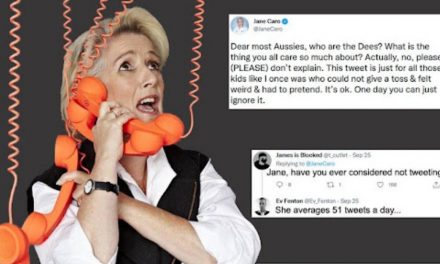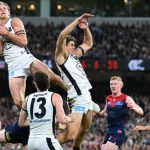Circa 1900 at the Western Australian jail at Wyndham. This was not a federation of common ideals or humanity.
All arguments dissolve with this photograph. All words melt under the weight of those chains. The iron necklace was estimated to weigh about 2.5 kilograms. It was padlocked. Manacles bound the hands. It’s impossible to look into those captured eyes looking out and wonder what these men were thinking.
The photograph was taken circa 1900 at the Western Australian jail at Wyndham. Little is known of the circumstances of the photograph, but this can be said: this was not a federation of common ideals or humanity.
In 1901, the Commonwealth of Australia came into being. It was 131 years after James Cook had planted a flag on the eastern coast of a land mass of 7.7 million square kilometres and proclaimed it to be part of the British Empire.
Thus do empires, with a flag, put to the sword and musket those in their way. With a solemn ceremony, alien to the land and its inhabitants, is history both denied and a culture made the enemy.
The dispossession, the massacres, the segregation, the forcing, in effect, of one mask on to another’s face is well documented.
In 1951, as part of the jubilee celebrations of the Commonwealth of Australia (the lacerating irony in that word commonwealth now) a booklet was produced for the children of this country, as Prime Minister Robert Menzies termed it in the introduction.
Over several thousand words the genesis and evolution of white settlement is extolled, the hardships of the farmers praised, the resilience of the explorers and the common folk to forge a new nation lauded. And all this is true.
But in the entire publication there is but one sentence on the Indigenous peoples. It is this: “Spanish Catholics and German Lutherans, as well as British missionaries, have taken the Christian religion and civilised habits to Australian aborigines in remote parts of the continent.”
The “civilised habits”.
One wonders if the captor in the photograph considered himself a Christian man.
PLEASE HELP US CONTINUE TO THRIVE BY BECOMING AN OFFICIAL FOOTYOLOGY PATRON. JUST CLICK THIS LINK.
And yes, the past is a foreign country wherein they did things differently, and yes one shouldn’t judge someone or generalise against them unless one has walked a mile in their shoes. But here is a universal question for the ages: would you do unto others what you would not be willing to have done to yourself? Now, there’s a Christian thought lost in colonisation.
In 1988, the Bicentenary of Arthur Phillip landing his First Fleet at Sydney Cove, Nobel Prize winner the author Patrick White was asked why he wouldn’t be publishing anything in that year nor why he wouldn’t allow anything of his to be performed.
He said: “The whole idea of the Bicentenary had been troubling me. There was too little I could feel proud of in our past. Even less in our present. Very little has been done to give them (Aborigines) a sense of security in the country we invaded.
“Aborigines may not be shot and poisoned as they were in the early days of colonisation, but there are subtler ways of disposing of them. They can be induced to take their own lives by the psychic torments they undergo in police cells.”
There have been 70 Indigenous deaths in custody this year, and 555 since the royal commission into deaths in custody released its report in 1991.
The path to reconciliation is long. It is not an atomic blast after atomic blast of epiphanies, it is like the ocean washing against the rocks of prejudice, shuttered views, racism, and just dumb ignorance. There has been progress, particularly in the past two decades.
In the remaining days to the referendum on a Voice to parliament, the air and the airwaves will be filled with passion from both sides of the question Yes or No. Perhaps we should just look at the photograph and ask, what would you be saying if you had a voice?












Just to be clear – your argument is that we should judge the future based on a photograph from 123 years ago? Amend the constitution as if NOTHING positive has happened since? And lots of terrible news since this photo was taken with no allowance of the progress that has been made (but yes – jnot enough!). I want to see The Voice succeed but my discussions so far have relied on logic as against terrible, dishonest emotional distortion? If we lose it will be because of childish tactics like this. Fair play to Rohan for allowing you this chance but at a better time I hope you reflect and realise how much better your article could have been.